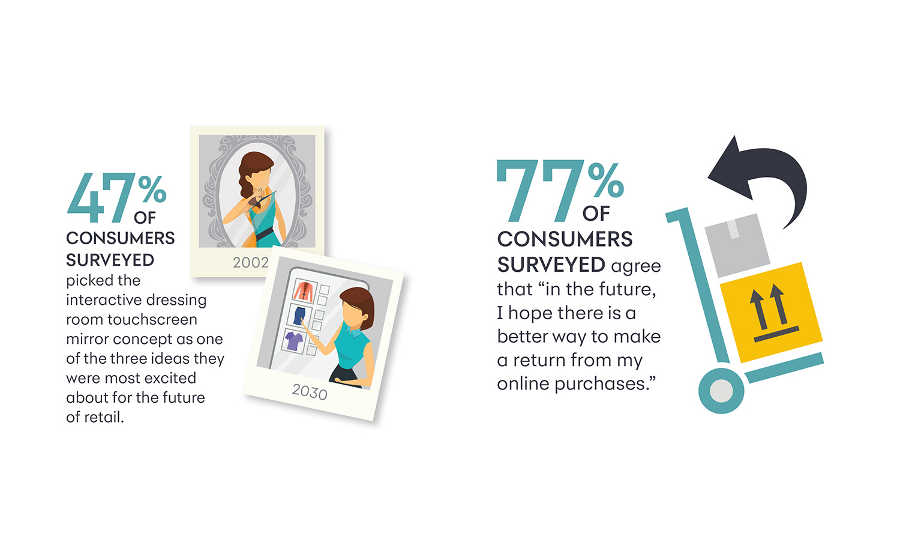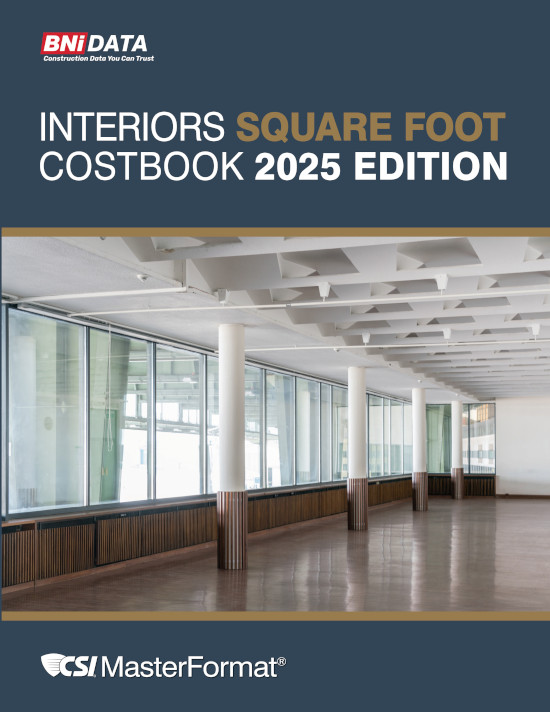Synchrony Financial recently released findings from its inaugural “Future of Retail: Insight and Influences Shaping Retail Innovation” report, examining consumer perspectives and shopping trends expected to change the retail industry by 2030.
Building on input from retailers and industry experts, consumers were asked what excites them about shopping in the future and their expectations of the evolving retail environment. Findings from the multiphase research is organized into six core themes:
Technology will bring a new era of DIY shopping–changing how shoppers access, select, and pay. The self-serve retail model, 24/7 stores with robot-assisted drive-thru windows, and interactive mirrors will become mainstream. Nearly half (47%) of consumers surveyed ranked interactive touchscreen mirrors in dressing rooms among the top three most exciting innovations of the future.
“Findings show shoppers seek self- and on-demand service, increased customization, and seamless home and in-store integration,” said Whit Goodrich, chief marketing officer (CMO) of retail cards. “By having a pulse on the evolving desires of the American consumer, we’re able to pioneer new solutions to help retailers deliver a better shopping experience with tailored loyalty benefits and rewards.”
Consumers will expect retailers to tap into the personal information they willingly provide to deliver better customized products and offers. From RFID in phones and wearables to biometrics such as finger and palm scanners, retailers will know shoppers well enough to direct them to preferred in-store items and send immediate and individualized sales offers. In-home chat bot devices and unbiased experts within “digital assistants” will become popular.
“One of the biggest disrupters in retail in the future could be 3D printing–footprints to create shoes and ways to produce many things faster and more inexpensively in a manner we never could before. It’s mass customization,” said Courtney Gentleman, CMO, payment solutions.
Increasingly, technology will give rise to a more demanding shopper base–one that expects what they purchase to be instantly available or returned. Among consumers surveyed, 77% anticipate better ways of making returns from online purchases in the future. Instant gratification will be an important part of the shopping experience offered in the form of stores on wheels, trunk stores, pop-up shops and subscription services; return buttons in retailer apps that re-package and pick-up items; and real-time inventory views and better ship-to-store options.
The confluence of channels and high-definition camera technology will enable shoppers to access an interface through virtual or augmented reality to see how a new sofa, fabric and paint, garage door, flooring or other items will look in their house. Consumers will be able to secure in-home retailer services, purchase on demand using smart labels or QR codes, shop in 3D and use instant try-on features.
“Why have anything altered again?” said Bart Schaller, CMO. “Shoppers will be able to take a perfectly dimensioned picture of a person’s body, type and form and upload it to retailer apps. Without moving from the sofa, a pair of pants will arrive at their doorstep ready to go.”
Brick-and-mortar stores of the future will focus on delivering genuine brand experiences to build both trust and loyalty–tapping into consumer desires. More than half of study participants (55%) are excited about blended in-store and entertaining experiences such as coffee shops, cafés, music, bars, or complimentary samplings of products or services.
Instead of appealing to everyone, 57% of consumers agree that retailers must streamline and focus on doing one or two things well. Specialty retailers will remain a go-to in high-involvement categories, while online and automated reordering will reduce the need for as many one-stop-shop stores. Regardless of category, brands of the future must have a strong reason for being.
“The future of retail will look dramatically different in 2030 than it does today,” said Goodrich. “We’re urging retailers to begin planning for that future now, and our emerging trends analysis is just the start.”
For more information, visit www.synchronyconnect.com.









